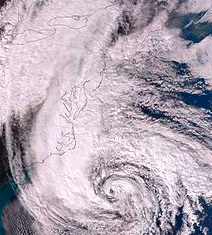Early loss estimates from Sandy have ranged as high as $25 billion, according to disaster-modeling firm Risk Management Solutions, threatening to dim the outlook for "cat" bonds. These bonds allow insurers to transfer the risk of potential losses from a predetermined list of natural disasters to investors in exchange for regular payments.
But less than a month after Sandy, market participants are already piling into a new deal that will cover insurer USAA. A spokeswoman for USAA had no comment, but the size of the newly marketed bond, called Residential Re series 2012- II, was increased to $400 million from $250 million in recent days, according to a person who was pitched on the transaction.
Should the deal match expectations, it would ensure this year's issuance stays on track as the busiest since 2007. With paltry yields on offer elsewhere, $4.8 billion of bonds exposed to natural catastrophe risks have been sold already this year.
"The fact they are upsizing and putting the price in a range comparable with pre-Sandy deals shows the market is healthy," said Bill Dubinsky, head of insurance-linked securities at Willis Capital Markets & Advisory. He predicted overall issuance for cat bonds will be between $5.5 billion and $6 billion by the end of 2012.
Bankers working on the new deal at Goldman Sachs and Swiss Re Capital Markets declined to comment on its progress or expected yield, as did bankers at Deutsche Bank Securities, which is supporting the sale.
Cat bonds globally yield 8.83% and U.S. windstorm-exposed ones 9.78%, according to reinsurer Swiss Re. That compares to 6.76% in a Barclays index of U.S. high yield or "junk" rated corporate bonds.
Boosting appetite for some of these types of cat bonds is their structure, which has insurers on the hook for a significant portion of initial losses.
In one 2012 bond designed to cover Country Mutual Insurance Co. and North Carolina Farm Bureau Co., three earlier events have already resulted in $110 million of losses for Country Mutual. Rodrigo Araya, a senior vice president at Moody's Investors Service, said that Sandy will saddle the insurer with a further $40 million of losses.
But investors in the bond likely won't sustain a loss because insurers are responsible for the first $300 million of aggregate losses, he said.
Even so, cat bonds aren't completely immune to Sandy. The price of these bonds is down 3.6% since the storm, according to an index administered by Swiss Re. Meanwhile, returns have dropped 3.1%.
Partly weighing on the market, Standard & Poor's placed some Res Re bonds issued both in 2011 and earlier in 2012 on negative watch on Nov. 6 and on Friday downgraded the Res Re 2011 bonds.
Broker Aon Benfield Securities in Chicago marked down bonds predominantly exposed to hurricanes in the Northeast by 10% to 15% following Sandy, according to Paul Schultz, chief executive of the securities unit.
Mr. Schultz said the recent industry loss estimates "may create a pause" in investor appetite, but that is unlikely to hamper new deals.
Given the near-record low yields in several debt instruments, Willis' Mr. Dubinsky estimates that $7 billion of new money flowed into insurance-linked securities in the past year.
"These investors understand big events can cost them money," he said. "But in the big picture they are still willing to take risk."













 Even Hurricane Sandy hasn't stopped a banner year for catastrophe bonds.
Even Hurricane Sandy hasn't stopped a banner year for catastrophe bonds.